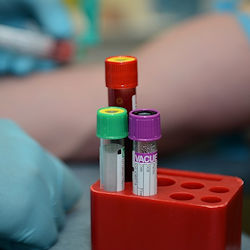Signs and Symptoms
A significant portion of the lead that you inhale or ingest gets into your bloodstream. Once in your bloodstream, lead circulates throughout your body and is either filtered out of the body or stored in various organs and body tissues. As exposure to lead continues, the amount stored in your body will increase. Even though you may not be aware of any immediate symptoms of disease, stored lead can be slowly causing irreversible damage to cells, organs, and body systems.
Chronic Overexposure Symptoms
Encephalopathy: Damage to the central nervous system in general and the brain (encephalopathy) in particular is one of the most severe forms of lead poisoning. The most severe, often fatal, form of encephalopathy may be preceded by vomiting, a feeling of dullness progressing to drowsiness and stupor, poor memory, restlessness, irritability, tremor, and convulsions. It may arise suddenly with the onset of seizures, followed by coma, and death.
Peripheral neuropathy: There is also a tendency for muscular weakness to develop. This weakness may progress to paralysis often observed as a characteristic "wrist drop" or "foot drop" and is a manifestation of a disease to the nervous system called peripheral neuropathy.
Kidney disease: Chronic overexposure to lead also results in kidney disease with few, if any, symptoms appearing until extensive and most likely permanent kidney damage has occurred. When overt symptoms of urinary dysfunction arise, it is often too late to correct or prevent worsening conditions, and progression to kidney dialysis or death is possible.
Reproductive systems: Chronic overexposure to lead impairs the reproductive systems of both men and women. Overexposure to lead may result in decreased sex drive, impotence and sterility in men. Lead can alter the structure of sperm cells raising the risk of birth defects. There is evidence of miscarriage and stillbirth in women whose husbands were exposed to lead or who were exposed to lead themselves. Lead exposure also may result in decreased fertility, and abnormal menstrual cycles in women.
Anemia: Overexposure to lead also disrupts the blood-forming system resulting in decreased hemoglobin (the substance in the blood that carries oxygen to the cells) and ultimately anemia. Anemia is characterized by weakness, pallor and fatigue as a result of decreased oxygen carrying capacity in the blood.
Reporting
Each employee is responsible for reporting signs and symptoms of health problems. You should immediately notify your employer if you develop signs or symptoms associated with lead poisoning or if you desire medical advice concerning the effects of current or past exposure to lead on your ability to have a healthy child. You should also notify your employer if you have difficulty breathing during a respirator fit test or while wearing a respirator. In each of these cases your employer must make available to you appropriate medical examinations or consultations. These must be provided at no cost to you and at a reasonable time and place.
Measuring Lead Levels
Measuring your blood lead level is the most useful indicator of the amount of lead being absorbed by your body. Blood lead levels (PbB) are most often reported in milligrams (mg) or micrograms (ug) of lead (1 mg=1000 ug) per 100 grams (100g).
- Although there is NO established absolutely safe level of lead exposure, the best way to prevent all forms of lead-related impairments and diseases-both short term and long term- is to maintain your blood PbB below 40 ug/100g. Once your blood lead level climbs above 40 ug/100g, your risk of disease increases.
- The blood lead levels of workers (both male and female workers) who intend to have children should be maintained below 30 ug/100g to minimize adverse reproductive health effects to the parents and to the developing fetus.
Knowledge Check Choose the best answer for the question.
1-7. A significant portion of the lead that you inhale or ingest gets into your _____.
You forgot to answer the question!

